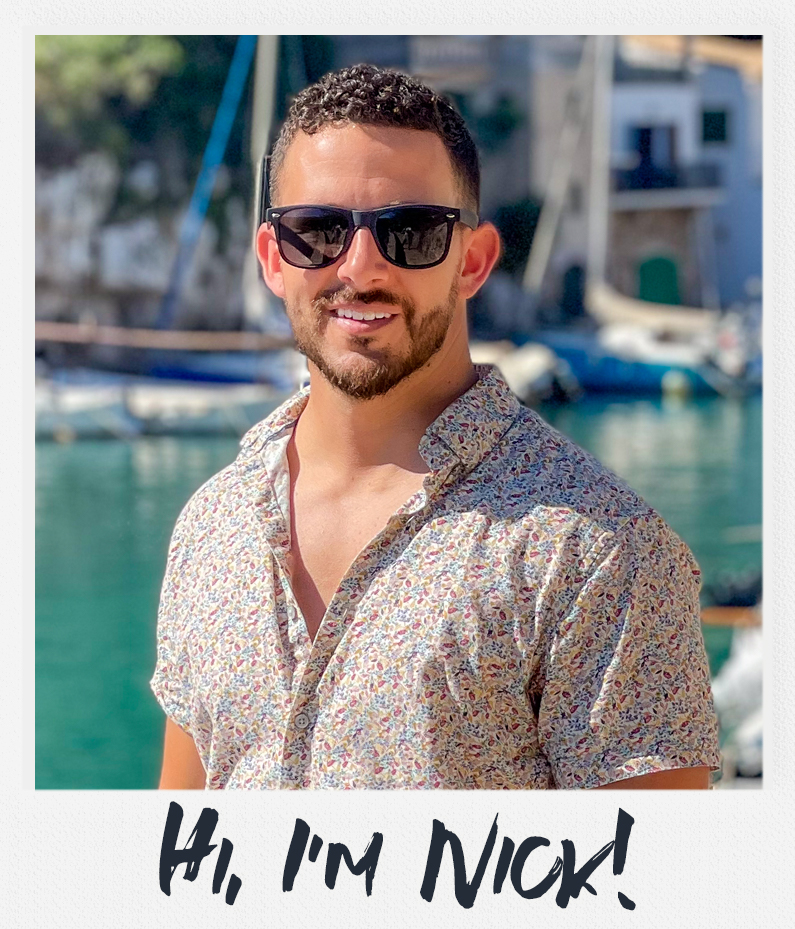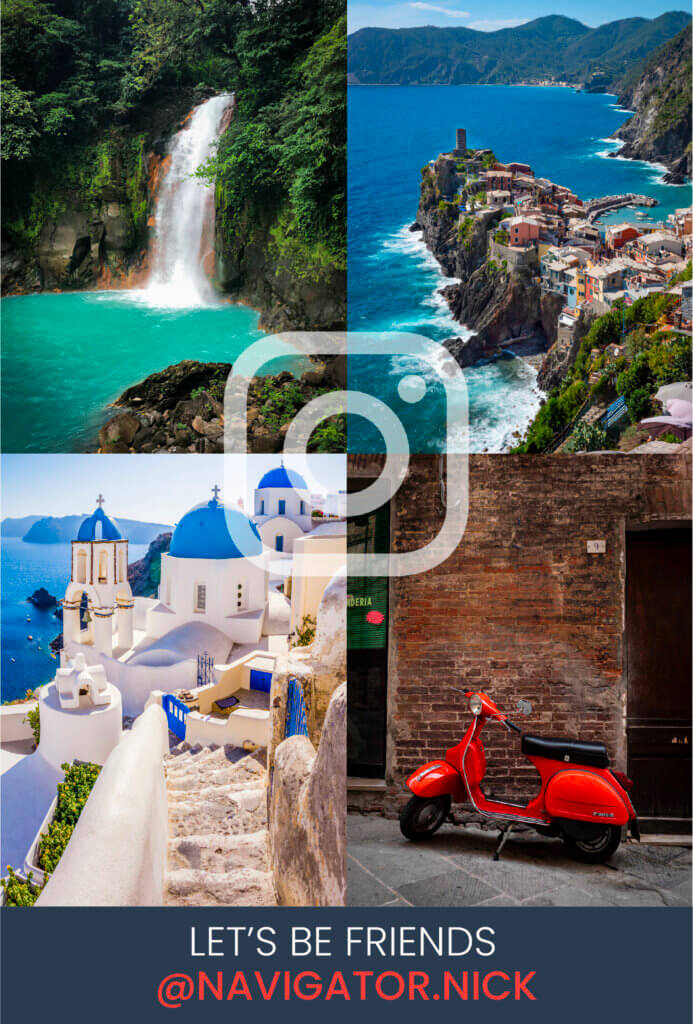Hi there! My name is Lizzy Moyer and I have traveled to over twenty countries, most being within the past few years of my life. Each place I have ventured to was for a different purpose: studying abroad, vacationing, volunteering, interning, etc. However, what all of these places have in common is that, wherever I have been, I have created deep and meaningful relationships, that translate into familial-like bonds and unforgettable memories.
An experience I wish to highlight is my most recent international journey over to Ecuador for four months. The purpose of this trip in particular was to explore a potential career path of Public Health and / or Holistic Healing but also to explore and discover the unique culture. Most of my time was spent in the small Amazonian town of Tena. I had no idea what to expect…Piranhas? No internet? Venomous spiders? No toilets? It would all be a giant surprise to me, but I was more than open-minded because I knew it was time for me to get up and explore a new culture again. Being in environments as such, knowing nobody, yet soon to befriend many, drives me to live every moment and day of my life as if something incredible is about to happen. And with this mindset, something eye-opening and valuable occurred each and every day.
How It All Started…
My journey started with an orientation from the internship company I came over with. Though the first days of traveling somewhere new are exhilarating, we are all bound to experience culture shock at some point or another when living in a new place for more than a few weeks. As part of the orientation, they prepared us for this and also introduced us to some Amazonian plants and fruits. Guanabana, over 5 types of bananas, Guayusa tea leaf, Ayuhausca, Cacao, Cacao Blanco, Dragonfruit, Granadilla being some of them. Little did I know, I had just touched the surface of the plethora of plants and foods that the Amazon region produces.
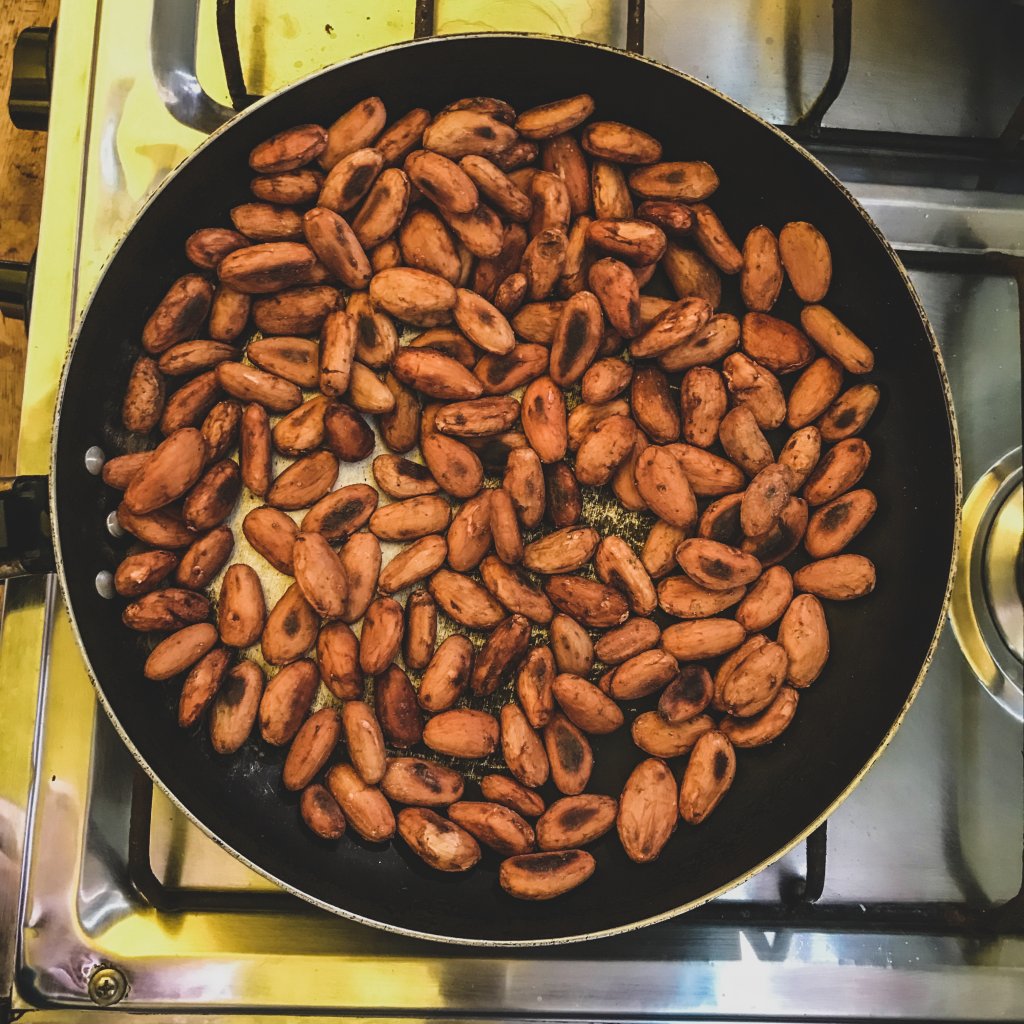
Soon after, I was to meet my host family, the Grefas. I kept seeing Grefa signs outside of apartments in the town of Tena, which made me think I would be right in town. However, it turned out “Grefa” was a very common last name in this area. Actually, it was one of about ten last names that seem to exist in Tena and the surrounding villages. I was quickly, and what seemed suddenly, dropped off in San Pablo, a small community of 800 people that was thirty minutes outside of the town center of Tena. This was where the Grefas lived in what seemed to be the coolest tree house in the rain forest! Ricardo and Marcelena, the father and mother, had NINE kids! And this was not a lot compared to other families. Five of their kids still lived with them (one was named Richard Nixon Grefa Chiguango! The others’ names were Glida, Ruth, Jefferson, Wilmer, Walter, Gandhi, Edison Marceleno and other names one wouldn’t expect in South America!). One of their granddaughters, Karen, who was my age, 24, also lived with them.
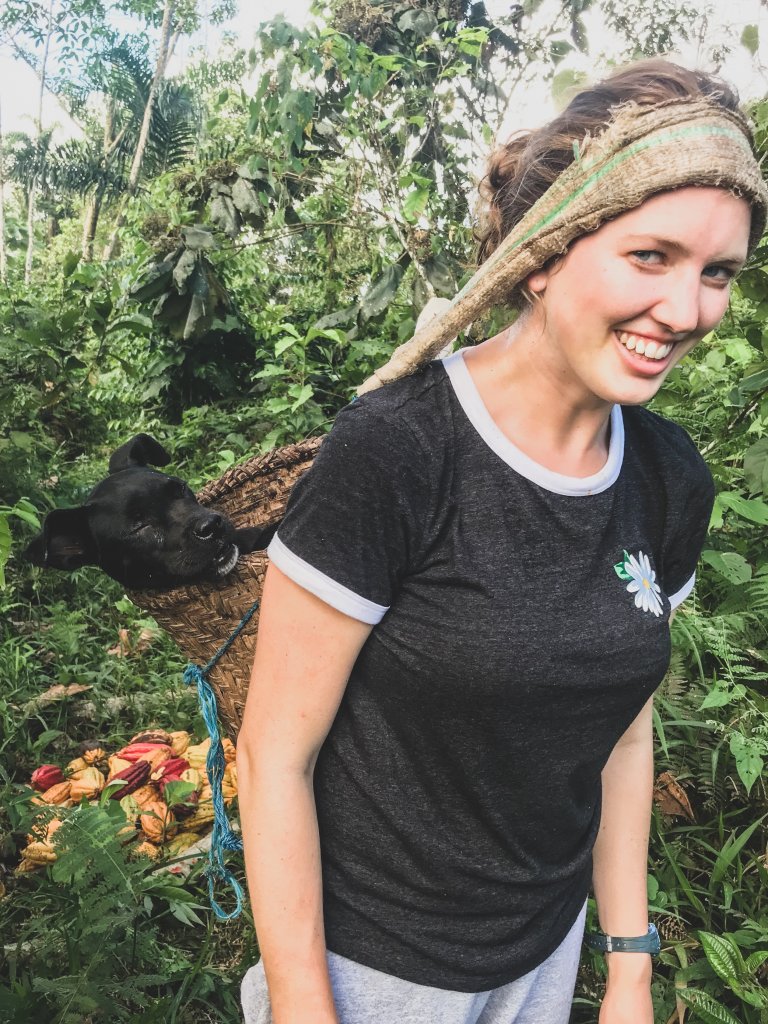
Dogs, roosters, chicken, birds, and frogs made up the various wild sounds I noticed when I entered their home and finca, or family farm. Richard, one of the sons, gave me a tour of the finca right away, where we found a woman carrying a machete and a basket strapped around her head. This was Marcelena! Turns out, it is more common for a woman than a man to carry a machete because they are the ones who spend most of their day and life tending to the farm and all the plants within.
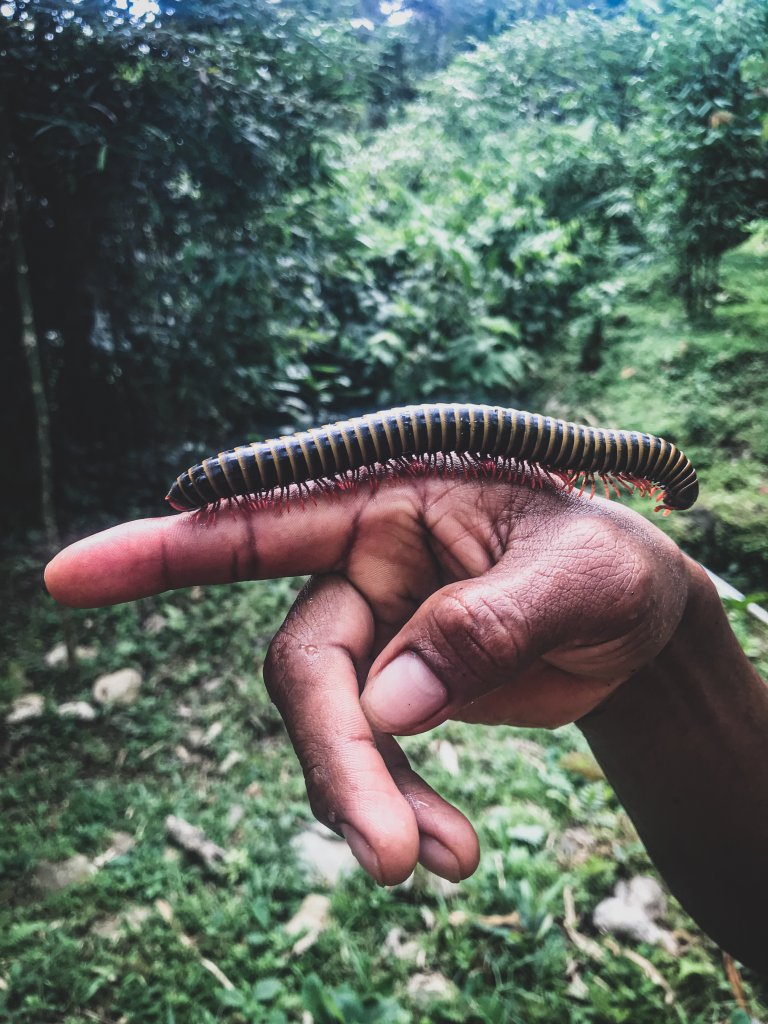
The Kichwa Indigenous Culture
I settled into my room, and began to learn about my host family and the Kichwa indigenous culture they represent. I had taken Spanish all four years in high school, listened to Spanish music, visited Mexico and Nicaragua, and played soccer with Spanish-speakers, so luckily I knew enough Spanish to get me by! It was tough to understand them, so they spoke slowly while we laughed at the mistakes and misinterpretations I made! Ricardo, the father, was a well-respected Shaman in the area and holds ceremonies with means to heal others or continue traditions passed down from generation to generation. Marcelena, a sinchi warmi, or strong woman, endlessly tended to her farm and supported her family. One of the host brothers I spent a lot of time with was a chef, jungle tour guide, and painter—a man of many talents. The girls also cherished my presence and taught me how to make Amazonian jewelry out of extremely small beads called seed beads, about the size of a chia seed.
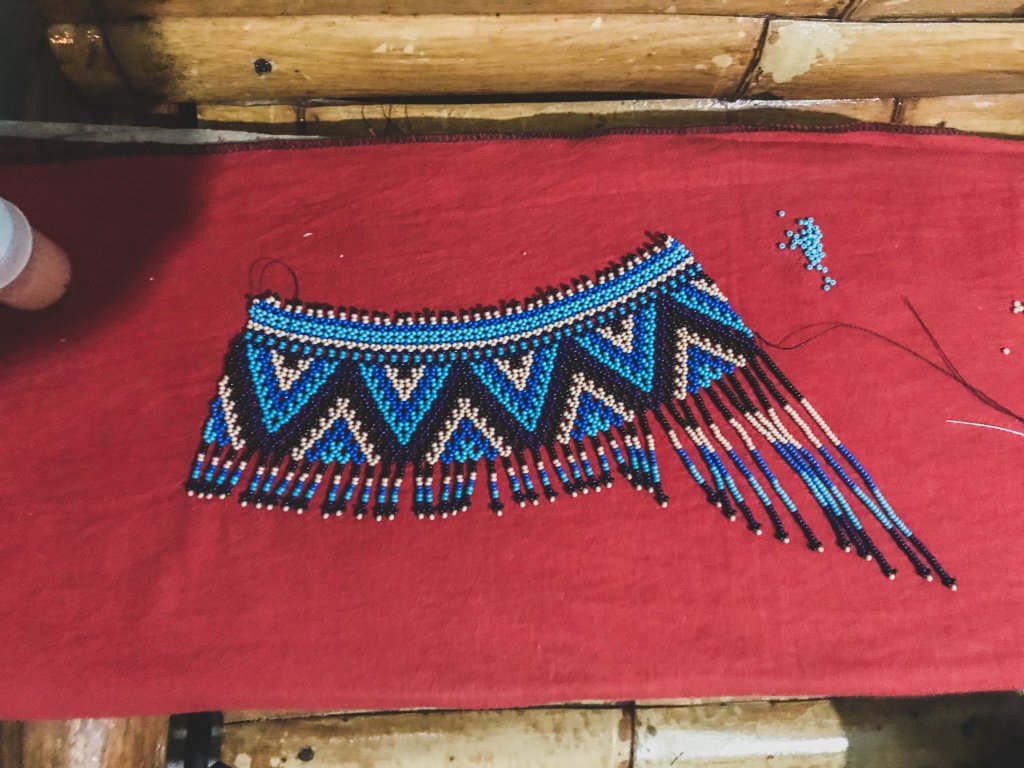
They also were very talented and thoroughly enjoyed sharing their passions and part of their culture with me. I could tell within the first day of being there that it was going to be such a precious adventure living with a welcoming and playful family that never seemed to cease laughing, even at 6 am!

For my internship, I volunteered time at the local Center of Public Health. Here, I participated in brigades that ventured out to isolated villages, learned Spanish medical vocabulary, and explored the different fields of medicine that the base clinic offered. Something I loved about the experience was the opportunity I was given to speak with the locals and understand their life situations. There’s one instance that stands out in particular when we went to a far out village that involved crossing over a river known to have boas!
Anyway, this village was so remote that it only had one common house or community center and the residents’ houses were spread out amongst the trees. The Ecuadorian practitioners and I walked about a mile to one lady’s house because it was noted that she just gave birth and needed to be visited. She only spoke Kichwa, the indigenous language, so we had a translator join us as well. When we arrived, there were children hiding behind a wooden post. We found this somewhat strange because they wouldn’t respond to anything the translator or we said. Once the mother was located, she shared that she just gave birth to her tenth child a few days ago in her tree house. The mother wouldn’t let us visit the baby inside because one of her other children was dying of Leukemia inside the same room, and she didn’t want us to see. Furthermore, there was a Shaman taking care of the dying child as he approached death. The doctors did what they could to help, but, during that whole visit, I was struck by the emotions surrounding the situation.
Teaching English as a Second Language
Coming across events like this while I was in Ecuador made me realize how sheltered I was from death, but maybe that’s just because I don’t work in a hospital. Either way, mortality was much more easily accepted in this area. I not only came across this instance but also witnessed multiple other examples of people and animals dying while lacking medical attention.
On my off time from the clinic, I taught English, organized sports groups, and spent time with the infamous Grefa family. There was a school across the street from the Grefa’s house that I would go to once per week to help the children comprehend my native language. Since I brought my ukulele (SUPER portable instrument!), I was able to teach English through various songs that were applicable to kids 5-18 years old. I cannot express in words how much appreciation I felt from the students and teachers…and only from ONE day per week! During recess, I challenged some of the boys to soccer, or I should say…FUTBOL! This was a highlight not only for them to play with a girl from the USA, but also for me to be playing with indigenous kids of Ecuador! Oddly enough, I joined in on a Zoom class once I returned and while COVID was occurring in the spring. It was such a treat to be able to reconnect with many of the older kids.
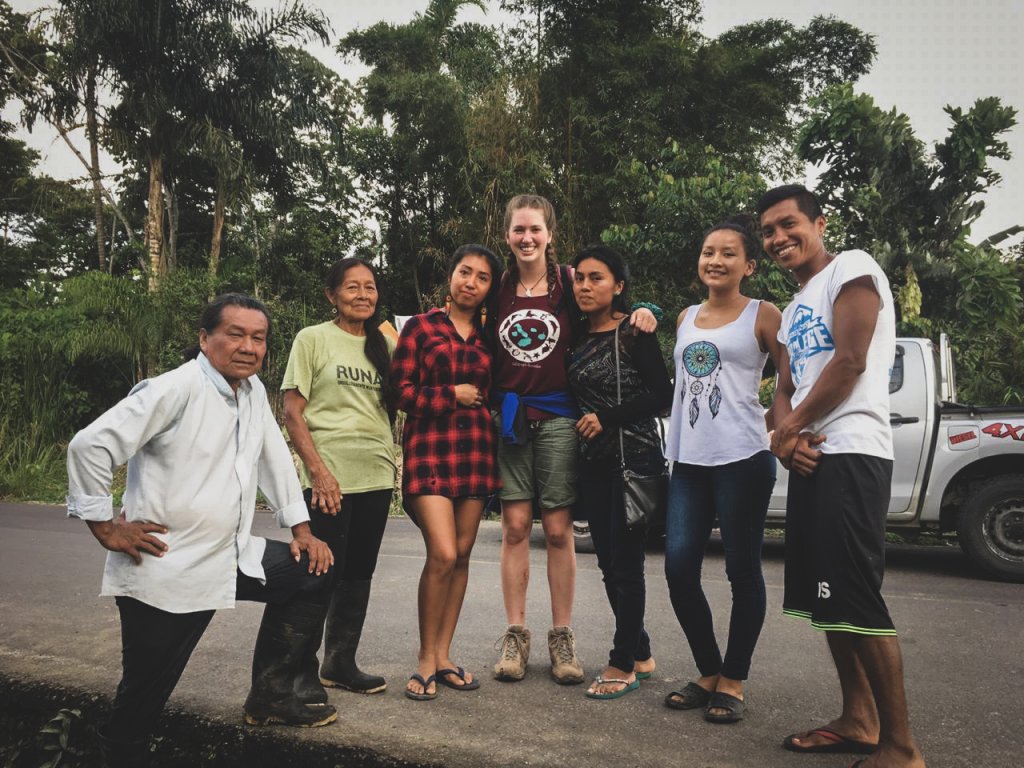
Sports are also a way I connect with people. There were a lot of expats, fellow interns, and refugees from Venezuela in the community. Once or twice per week I would join an Ultimate Frisbee group and decided to create a soccer group. There was a pristine park in Tena, which was where we would all meet. It satisfied my need for activity while also connecting me with people I still communicate with today. A family of four would always be out playing with us. I don’t think they missed one day! This family was from Venezuela, but they had the best outlook on life since they were experiencing challenges together as a family. During COVID, the kids’ classes stopped for a bit while things got figured out. That said, I conducted English lessons remotely for them, which keeps us in contact still today!
Lastly, but not least, many days and nights were spent laughing with the Grefas. It was fairly easy to catch on to their lingo and mannerisms. Constantly, they were poking fun at each other and just would not stop laughing! It opened a new perspective for me. Normally at home, I wake up somewhat seriously, go eat, possibly chat with my family, but never laugh my brains out! This was a common occurrence in the Grefa household during breakfast and all throughout the day. Often times, they were involved in things like chocolate cooking, yucca planting, jewelry-making, salsa/bachata dancing, and Ayuhausca preparation. I made it known that I wanted to join them, and so they made sure I had a memorable experience! For example, picking cacao from the forest, sucking on the sweet seeds, letting them dry in the sun on the street, cracking them to the raw seed, and then roasting and grinding them eventually lead to the sweet, sweet dark chocolate I dream of! In exchange for various practices in their culture, I suggested we paint Easter eggs and read together in English! Both of which they adored because it was a taste into a new culture for them.
“La Reina”
Since day one, they opened up and shared their culture with me. Within the first few days, they included me in a Guayusa ceremony that was occurring right before a “La Reina,” or queen, competition. The Guayusa ceremony is a common practice in indigenous families. The mother or father wakes around 3 am (yes, this is when I woke up when I attended it, too!) to start steeping the Guayusa tea leaves. With the whole family around, they would exchange their dreams from the previous night and have time to connect with each other. This tea leaf has a goof amount of caffeine in it and kept me up almost 24 hours!
To continue, the “La Reina” competition that followed was the beauty and cultural pageant held for the indigenous young women of the village and surrounding villages. The girls would compete and choreograph a dance and skit that involved them simulating work in the finca. The judges would also choose the winner based on looks, which revolved around the length and silkiness of their luscious black hair. It reminded me of Miss America, but indigenous-style! What an interesting way to get a snap-shot into their way of life and celebrations.
Being in a new place became home quickly, but I craved to venture out the other regions of Ecuador: The Galapagos, The Andes Mountains, and the Coast. Those require more space and time to write about! What unbelievable experiences they were alone.
I’m sharing this journey of mine because I want to highlight the experience I received and manifested by chasing the opportunities I wanted to create and was given. I wanted to use it to my advantage while still benefitting the people I interacted with. Thankfully, it helped direct me towards a meaningful path for my life and provided me many more valuable friendships.
Experience all of Ecuador from my Youtube video!
Traveling can take many forms: a business trip, study abroad adventure, internship, work experience, vacation, and simply just a pass through. Each manner of traveling can either cultivate lasting memories and cherished friendships or just be a way to pass time in a different place. It’s our choice. Now go out and make a new friend! ☺


 Next Post
Next Post